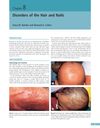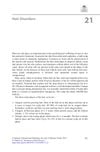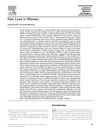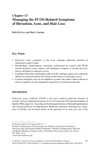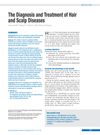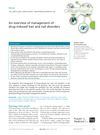Treatment of Acne with Intermittent Isotretinoin: Cohort Study
September 1998
in “
JEADV. Journal of the European Academy of Dermatology and Venereology/Journal of the European Academy of Dermatology and Venereology
”
isotretinoin baldness alopecia areata hypertrichosis hirsutism Beau's lines onychomadesis onycholysis acneiform eruptions papulopustular eruptions folliculitis epidermal growth factor receptor inhibitors topical antibiotics cyclines iatrogenic xerosis seborrheic dermatitis lipodystrophies antiretroviral therapies laser techniques filler techniques Accutane hair loss hair thinning excessive hair growth nail changes nail shedding nail separation acne-like eruptions pustular eruptions hair follicle inflammation EGFR inhibitors antibiotic creams tetracyclines dry skin dandruff fat redistribution HIV treatments laser treatments dermal fillers
TLDR Intermittent isotretinoin can cause various skin, hair, and nail changes.
The document discussed the various skin, hair, and nail changes caused by systemic medications, which could be temporary or permanent and have significant aesthetic impacts. It highlighted pigmentation disorders, including hyperpigmentations and less common hypopigmentations, and their varied presentations. Hair changes such as baldness, alopecia areata, structural changes, hypertrichosis, and hirsutism were noted, along with nail alterations like Beau's lines, onychomadesis, and onycholysis. Acneiform eruptions, representing 1% of drug reactions, were described as papulopustular and often non-comedonal. Epidermal growth factor receptor inhibitors caused severe papulopustular eruptions resembling folliculitis, treatable with topical antibiotics or cyclines. Iatrogenic xerosis and seborrheic dermatitis, as well as lipodystrophies associated with antiretroviral therapies, were also discussed. Some adverse reactions could be favorably treated with laser or filler techniques.

